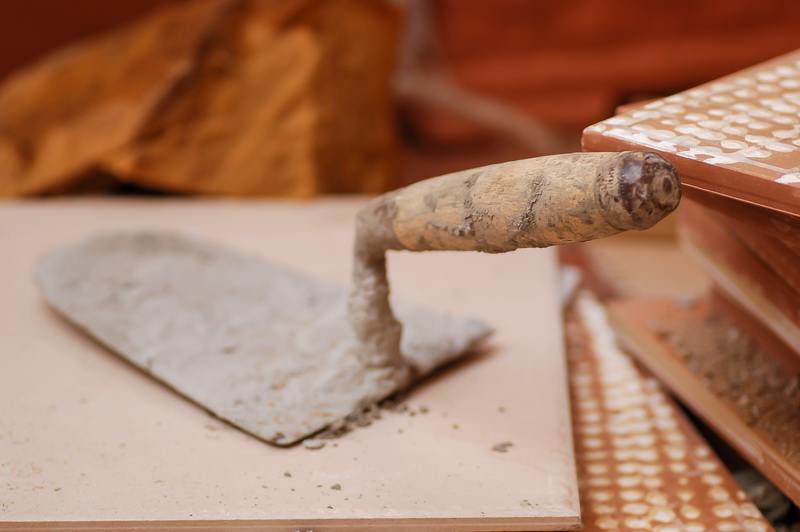May it be indoor or outdoor, molds are just everywhere; so isn’t it necessary to know how to remove mold from cement? While you’re looking into that, let’s also look through what causes it in the first place.
You may have noticed that molds commonly exist and are observable on foods like bread, meat, and sweet stuff, as well as on cold dark spots underneath your sink. They are practically everywhere that you might be wondering.

Molds are a type of fungi and require some specific environment to continue spreading. If these molds have somehow gone and started creating colonies in something cemented, somewhere in your home, then all these environmental requirements are most likely fulfilled.
Steps For Removing Molds On Cement
Figuring out which requirements were completed in your cement to allow molds to grow would be left for later consideration. For now, considering that molds are already well-spread somewhere in your property, here are some steps you should follow to effectively remove them.
Step #1. Test the infected area
First off, you’re going to need to test whether the mix you’re going to use for mold extermination is not going to cause further damage to the surface you’re treating. This damage can range from discoloration, curdling, and peeling off.
There are a few kinds of substances that you can choose from for your mold problem: bleach, vinegar, and commercial mold cleaner. You can pick one of these items first, prep it into the recommended concentration of the solution before you start your cleaning process.
For bleach, you can mix up a 10% solution with water, 80% solution for vinegar, and as recommended for the commercial mold cleanser. Make sure, though, that you only pick and use one at a time since mix-matching these with each other or other substances can produce toxic results.
After creating your solution, try applying it to a small portion of the mold-infected area to test its compatibility. If all comes out fine, then you can proceed to the next step.
Step #2. Clean the area
Before you start to apply the cleaning solution, make sure to remove all the items present in the molded concrete. Take out the things, especially those that have been infected by the mold as well.
Place the items in an open space where sunlight can reach them.
If there is furniture present, set them aside and check if the individual furniture has mold spots on them so that you can deal with it separately. After that, you can now proceed to apply your cleaning solution.
If the mold infestation is in your sink, here’s an article on how to get rid of black mold in the sink, for your perusal.
Step #3. Apply your solution
Now that the area has a clear space free of hindrances, you can apply your solution.
Remember to wear your safety equipment when cleaning mold-related issues. A pair of rubber gloves, eye goggles, and a mask are a must-have when washing so that you don’t encounter mold spores that may harm your health.
Using a heavy-duty sponge, scrub the molded area along with your chosen mold solution. Do not use a wire brush as it can damage the concrete with the brushing.
Scrub the area vigorously and make sure not to leave a spot unscrubbed.
After scrubbing and applying the cleaning solution, leave the mixture to sit for a while so that it can do its wonders perfectly. Do this repeatedly until the traces of molds are gone.
Step #4. Rinse and dry
After scrubbing the mold off of the concrete, you now proceed to rinse the concrete of the cleaning solution. If you own a hot pressure washer, use it to flush the concrete.
A hot pressure washer is one of the fastest and most effective ways of rinsing molded concrete. If you can’t afford a pressure washer, you try to see if rental stores rent a pressure washer.
If there are no rentals available near you, you can still try using a regular water hose to rinse your concrete.
After rinsing the concrete, dry it out using towels or clean rags. If you still see some leftover marks of molds, try other more potent methods than what you had executed.
Step #5. Return the furniture
Now that the concrete is all clean and rid of molds, you can proceed to return the stuff you have taken out earlier. Before that, remember to clean the furniture and other objects first to ensure that the molds won’t be back for a long while.
What causes molds on cement?
Like any other object, there are roots for mold occurence on concrete from the surface and possible nourishment. While molds may find it hard to find sustenance in inorganic concrete, they can feed on algae, moisture, and even salt.
Other than inside your house, you might also want to discover what causes mold on outside of house and be more effective in your quest to eradicate these fungi.
Conclusion
Now that you know how to remove mold from cement, maybe it’s time to check the nooks and corners of your house and remove any mold colony growing in its concrete walls!
